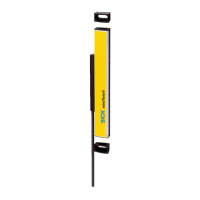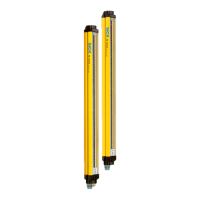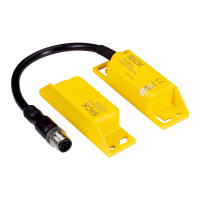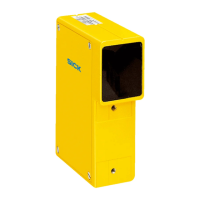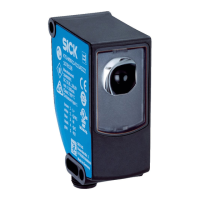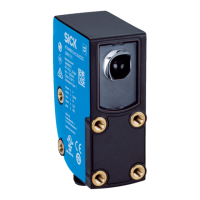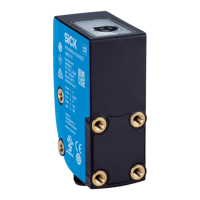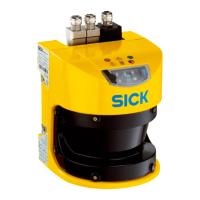DANGER
H
azard due to lack of effectiveness of the protective device
If there is a retroreflector in the protective field level (distance of the retroreflector from
protective field ≤ 6 m), it may not be possible detect people and parts of the body that
are to be protected, or it may not be possible to detect them on time.
b
Avoid retroreflectors in the protective field level if possible.
b
With retroreflectors at the protective field level: Increase overrun of the protective
field over the opening to be protected by supplement Z
R
= 350 mm.
DANGER
H
azard due to lack of effectiveness of the protective device
Devices with max. protective field range of 9 m: Strongly reflective surfaces (e.g. shiny
metal, tile) with a distance from the protective field ≤ 6 m can behave similarly to a
retroreflector if the laser beam hits the surface vertically. If the protective field is larger
than 50% of the effective protective field range in the direction of the laser beam which
is hitting the surface vertically, it is possible that persons and parts of the body that are
to be protected will not be detected or not be detected on time.
b
Avoid strongly reflective surfaces in the protective field level if possible.
b
With strongly reflective surfaces in the protective field level: Increase overrun of
the protective field over the opening to be protected by supplement Z
R
= 350 mm.
Protective field
T
he protective field must be designed so that it detects access by a person at a mini‐
mum distance from the hazardous point. This distance is required to prevent a person
or part of their body from reaching the hazardous area before the end of the machine’s
dangerous state.
In hazardous area protection, the minimum distance typically defines the position at
which the safety laser scanner is mounted.
In many cases, a resolution of 30 mm or 40 mm is suitable for hazardous point protec‐
tion.
DANGER
H
azard due to lack of effectiveness of the protective device
In the case of non-compliance, it is possible that the dangerous state of the machine
may not be stopped or not stopped in a timely manner.
1. Calculate the required minimum distance for your machine using the following for‐
mulas and examples.
2. Take this calculation and the specifications in these instructions into account
when mounting the safety laser scanner.
3. Take this calculation and the specifications in these instructions into account
when configuring the safety laser scanner.
DANGER
H
azard due to lack of effectiveness of the protective device
Persons or parts of the body to be protected may not be recognized or not recognized in
time in case of non-observance.
b
Always mount the safety laser scanner so that it is impossible to reach around or
behind.
b
Provide suitable additional measures if necessary.
4 P
ROJECT PLANNING
42
O P E R A T I N G I N S T R U C T I O N S | microScan3 – EFI-pro 8021913/15ZW/2019-11-14 | SICK
Subject to change without notice
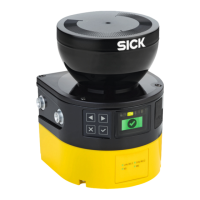
